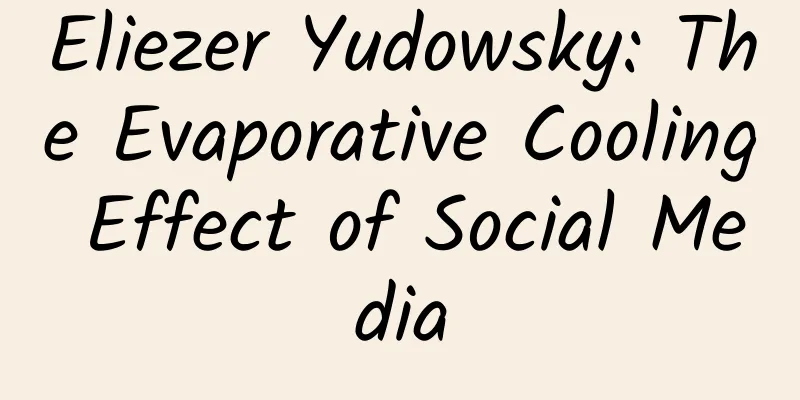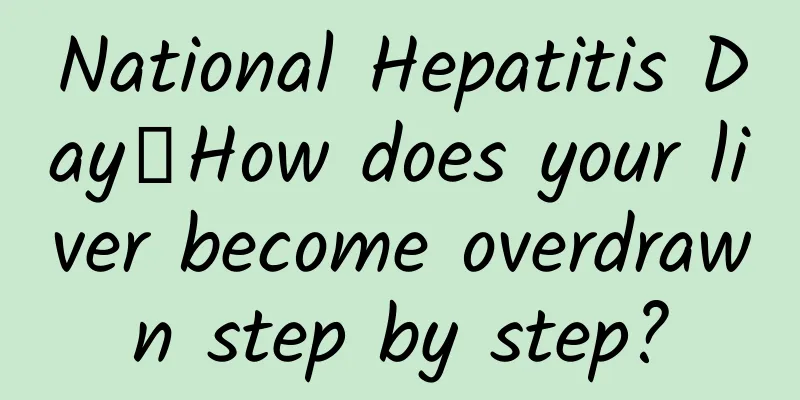Eliezer Yudowsky: The Evaporative Cooling Effect of Social Media

|
The person you want to know the most is also the person that others least want to know. The person you want to date the most is also the person that others least want to date. The person you want to talk to the most is the person that others least want to listen to. Many social apps fail because they ignore this most basic principle. I call it the evaporative cooling problem. And I believe that unless designers want to see their product slowly turn into a filthy mass of mediocrity, this problem of publicness must be solved in any collective product. The evaporative cooling effect is something I learned from Eliezer Yudowsky’s brilliant article on the peculiar phenomenon of group dynamics. This effect is what happens when most of the high-value contributors to an ecological community find that the community no longer provides what they need and leave. Once this happens, the quality of the community decreases, causing the second-highest-value contributors to find the community mediocre. Each layer of loss reduces the quality of the community, until the only people left are those with no skills or awareness, who have no idea that they are in a mediocre group. Evaporative cooling is a dynamic phenomenon that can occur in both the real world and online communities. But the self-explanatory nature of the Internet makes it more susceptible to this effect. By observing social structures in the real world, we can discover some of the causes of evaporative cooling and how to prevent it. First example: Moving to San Francisco, I thought, meant opening up the social fabric around the web. There are public gatherings, events, and a mix of 'scenes'. Along with that comes a whole host of shadowy, private, no-shows, exclusive activities that are the real life of the valley. You could live in the San Francisco Valley your whole life, blandly hopping around and never know this shadowy ecosystem exists. You could go to the same events every week and see the same group of aspiring entrepreneurs, social media marketers, CEOs of dumb companies, bloggers, and the occasional celebrity who is forced to attend for professional reasons. But if you develop your network appropriately, you'll have a chance to find your way into the shadow economy. How deep you want to go down this rabbit hole depends on your ability and desire. For every level of exclusivity, you're almost certainly being excluded by a deeper level. Some venues are well-known: TED, Davos, Sun Valley. But for every gathering you know of, there are at least a thousand more that you haven't heard of. After a while, you register what I call Groucho Marx's Law. You stop going to everything you can. lesson: Openness is the number one driver of evaporative cooling. If anyone can join your group, then the most likely people to join are the average players because they have the most to gain. Once they are in, they will be detrimental to the long-term health of the group unless they are included. Groups that are selective about who joins are more immune to evaporative cooling. Unfortunately, most web businesses have no choice but to open up their businesses. Most web 2.0 businesses rely on extracting tiny amounts of value from a huge user base, and counting on explosive growth so you don't have to worry about exits. Building a thriving community of 10,000+ members in 10 years is not enough to pay the bills. Second example: One community I participate in is called BayCHI. The community has been around for over 20 years, and to this day the quality of chat and participation in the community remains strong, seemingly only slightly affected by evaporative cooling. Why is this? A large part of the reason is what I call the role of social gatekeepers. Social gatekeepers are the mechanisms that allow participants to choose within the group. In the case of BayCHI, the social gatekeeper is the narrow and low-key nature of the content. Only those who are truly interested in the content and can take 3 hours out of their lives to participate in the conversation will participate in the first place. This already sets a minimum barrier to entry. experience: Social gating is a powerful method, and unlike other methods of exclusion, it works at a much larger scale, especially in the current, rapidly growing Internet environment. However, it is also a more subtle method, requiring more agile and nimble management. Niche methods are just one type of social gating; charging for inclusion is another popular approach. There are many more nuanced methods. For example, spelling is an interesting type of social gating. I just saw a forum where someone posted something funny, which immediately put you in or out of a certain boundary. At the other extreme is Quora, which in its early days had an incredibly Orwellian system where Quora employees would routinely review and edit your answers to correct spelling and grammar errors. I plan to write a blog post this Sunday about social software and social gating (tip: if you want to read it early, go to the Quora website to add a list). The third example: I was at an event this week with a very high quality audience called Warm Gun. In the room was the design director of Facebook and the design director of Google. How did Dave McClure get these two people in the same room? He actually put them on a podium. He asked them to participate in a discussion about how designers and engineers can better work together. He used the bait of giving special treatment to attract these very busy, high-value people to be in the same room with us farmers. experience: The different roles of participants can help shift the power ladder and eliminate evaporative cooling. When the community is small, this process can be managed at a social level. High-value participants get special treatment because they have recognition and respect from the community. But when the community is large, these social mechanisms don't work, and without alternative mechanisms, high-value participants will be particularly annoyed by the loss of special recognition, which will accelerate evaporative cooling. Explicit reputation systems like karma are probably the most popular method of creating unequal roles in online communities. However, for some reason, online communities are particularly resistant to meritocratic promotion structures that are common in the real world. In academia, high school students must compete to get into college. College students must compete to become doctoral candidates. Doctoral candidates must compete to become teaching assistants. Teaching assistants must compete for tenure, and tenured professors must compete to become department chairs. I can't think of any other online community that has a power structure similar to this. I'll think about this question more carefully later. Example 4: Finally, I want to analyze what I consider to be the most successful technical system that can be applied to quality maintenance: Facebook. I joined Facebook when it had only 1 million users. Since then, the user base has grown 500 times and my user experience has only degraded by 50%. The reason for this is that when a random user from Brazil joins, their impact on my experience is negligible. Because each user only sees their own small area of Facebook, each user has direct control over their own experience. Lest you think this is a property of social networks, Orkut was brought down by some random user from Brazil. Facebook's design, especially in the early days, was particularly sensitive to this design dilemma and therefore designed around it with great skill. experience: There are two basic models of social organization, which I call the 'square model' and the 'yard model'. In the square model, there is a central square that everyone can interact with and the interactions are publicly visible. In the yard model, the space is divided into a series of smaller yards, and you can only see the yard you are currently in. You can move to adjacent yards, but it is difficult to get to areas far from your area. Squares grow by increasing in size, and yards grow by adding more yards. These are the two basic models of social spaces. Each social space can be divided into a set of squares and courtyards. In Facebook, your profile, friends and news center are the courtyards, and fan pages and group activities are squares. Twitter is mainly a courtyard, but some trending topics belong to squares. In forums, the homepage and topic list are squares, but each sub-forum is a courtyard. Both squares and courtyards have their own pros and cons. Courtyards are notoriously difficult to set up. New users are stuck in empty courtyards with no idea how to connect to other hubs of activity. The management process is critical and still not fully understood (Friendfeed discovered that people had to have at least 5 friends to even have a chance to get served). Squares, on the other hand, only need to be set up once and then remain active, allowing new users to participate on day one. The visibility of the square is much higher than that of the courtyard, so it is easy to observe and understand your community. In the community, as for justice, sunlight is the best disinfectant, and those neglected spaces can often develop into breeding grounds for various social deviants. An absolutely amazing feature of the scrambled yard is that it allows your community to expand infinitely and grow wildly, even if there is absolutely no quality to speak of. This alone makes the scrambled yard an important element of good social design worth studying. Another point to make is that the real world is a clear courtyard, while the online world is a clear square. In real life, interaction and acoustics limit us to talking to only a few people at a time. Everyone's social life is very personal. It takes special work to give everyone the same content. In online social networking, the simplest plan is to give everyone exactly the same information. It takes special work to provide personalized content. It is interesting to see how this difference affects the two media. in conclusion Evaporative cooling is a fundamental dynamic of social interaction and has long-term corrosive effects on the health of communities. This post only covers 1% of my thoughts on the evaporative cooling effect, but I’m already 2,000 words in and I don’t want to get too long. They say ideas are worthless and execution is king. Since I arrived in the valley, I’ve heard nearly 100 ideas for social products in casual conversation. Half of the suggestions involve a meeting place of some kind, and 80% of them fail because of the evaporative cooling effect. If you’re designing a social product, it’s important to solve this problem first, or you’re doomed. via://article.yeeyan.org/view/betty/293169 |
<<: Did you know that bad mood can also trigger allergies?
>>: Do you know the birthmarks on your baby?
Recommend
Why does vaginal discharge turn black?
For women, under normal circumstances, the amount...
Is it normal to have trouble sleeping during early pregnancy?
Many female friends will encounter some problems ...
What tests should be done for the second child?
For many women, the process of pregnancy is usual...
Women feel tightness in lower abdomen when lying flat
Compared with male friends, female friends pay mo...
Why is the color of menstrual period dark?
The color of many women's menstrual blood ref...
Sleepiness in late pregnancy means the fetus grows fast
Many women have significant changes in their livi...
Can I eat peaches if I have dysmenorrhea?
Women with menstrual pain can eat peaches. Peache...
After the menstrual period is over, it comes again
Now many women report that their menstruation wil...
Can you taste expired food before throwing it away?
I believe you must have faced it. The question of...
Diagram of sha on a girl's back
At present, with people's increasing attentio...
Is the Kosi Garment Steamer easy to use? How to use the Kosi Garment Steamer
Speaking of hanging irons, it must be a must-have...
Can I have a baby after having a leep surgery?
Women can have children after having a leep opera...
Is the belly big or the belly big during pregnancy
As pregnancy progresses, your abdomen will become...
I took ceftriaxone during ovulation and got pregnant
It is best for women to prepare for pregnancy bef...









